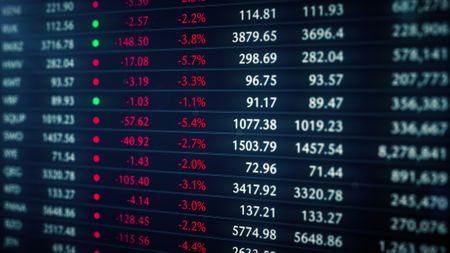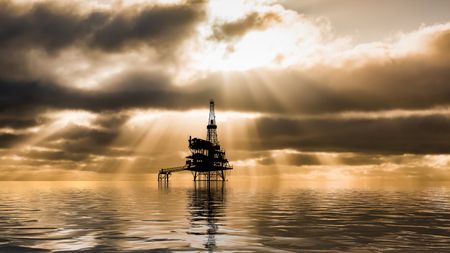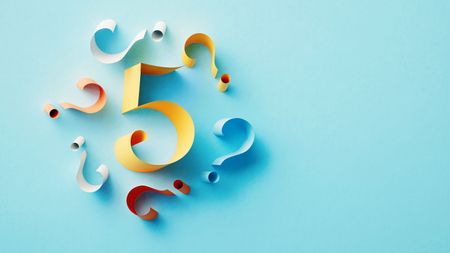Kiplinger Interest Rates Outlook: Tariff Fears Keep Rates from Declining
Both the bond market and the Federal Reserve would have pushed rates lower if not for the potential inflation that may be caused by tariffs.

Kiplinger’s Economic Outlooks are written by the staff of our weekly Kiplinger Letter and are unavailable elsewhere. Click here for a free issue of The Kiplinger Letter or to subscribe for the latest trends and forecasts from our highly experienced Kiplinger Letter team.
Interest rates would likely be lower than they are today, given an expected slowdown in the economy, if not for fears that tariffs will raise prices and possibly add momentum to inflation. Investors often seek haven from stock market volatility by increasing their holdings of bonds, driving bond prices up and yields down. And the Federal Reserve will often start cutting short-term interest rates if it thinks the economy is on shaky footing.
Last year, the 10-year Treasury yield dropped to 3.6% before the Fed started cutting rates, when it appeared that inflation would be brought under control. However, the 10-year’s yield quickly reversed course after the Fed actually started cutting short-term interest rates, on fears that lower Fed rates could allow inflation to rise again.

Sign up for Kiplinger’s Free E-Newsletters
Profit and prosper with the best of expert advice on investing, taxes, retirement, personal finance and more - straight to your e-mail.
Profit and prosper with the best of expert advice - straight to your e-mail.
This year, while rates dipped briefly below 4.2% in anticipation of a slowing economy, they soon moved back up to 4.3%. The 10-year Treasury yield will probably stay above 4.0% unless signs of a more severe economic slowdown start to emerge.
The Fed left short-term interest rates unchanged at its March 19 meeting because of all this uncertainty. The central bank is in a bit of a pickle. If it is confronted with an economic slowdown and rising inflation at the same time, which should it choose to address? It would normally cut rates to deal with a slowdown, and raise rates to counter higher inflation. So it will wait to make any rate changes, in order to see which problem it should address first. Also, the Fed doesn’t like to move if the direction of either the economy or inflation is unclear, preferring to wait until the data are more telling. The Fed feels that too many zigzags in policy will hurt its credibility.
The Fed slowed the pace at which it lets Treasury securities mature and run off its balance sheet to $5 billion per month, from $25 billion. This is technically an easing of monetary policy, since it means bond markets won’t have to absorb as many new Treasuries now. That could reduce long-term bond yields a bit. But the Fed left its runoff of mortgage-backed securities intact at $35 billion per month. The central bank would like to get non-Treasuries out of its portfolio as much as possible in order to avoid creating long-term influences on those asset markets.
Mortgage rates have dropped a quarter-point since long-term Treasury yields started easing. 30-year and 15-year fixed mortgage rates could ease a bit more if the economy weakens further. Mortgage rates are still higher than normal, relative to Treasuries, but whenever the Fed cuts short-term rates again, it will boost banks’ lending margins, which should eventually lower mortgage rates a bit more.
Top-rated corporate bond yields have edged down in tandem with Treasury yields, but low-rated bond yields have jumped with the rise in recession fears. AAA-rated long-term corporate bonds are yielding 4.8%; BBB-rated bonds, 5.4%; and CCC-rated bonds, 12.7%.
Related Content
Get Kiplinger Today newsletter — free
Profit and prosper with the best of Kiplinger's advice on investing, taxes, retirement, personal finance and much more. Delivered daily. Enter your email in the box and click Sign Me Up.

David is both staff economist and reporter for The Kiplinger Letter, overseeing Kiplinger forecasts for the U.S. and world economies. Previously, he was senior principal economist in the Center for Forecasting and Modeling at IHS/GlobalInsight, and an economist in the Chief Economist's Office of the U.S. Department of Commerce. David has co-written weekly reports on economic conditions since 1992, and has forecasted GDP and its components since 1995, beating the Blue Chip Indicators forecasts two-thirds of the time. David is a Certified Business Economist as recognized by the National Association for Business Economics. He has two master's degrees and is ABD in economics from the University of North Carolina at Chapel Hill.
-
 Social Security Under Trump: Live Updates to Keep You Up to Date
Social Security Under Trump: Live Updates to Keep You Up to DateSocial Security Blog Social Security is undergoing big changes in 2025 under President Trump. Get live daily news, updates, tips and analysis to help you navigate the developments.
By Donna LeValley Published
-
 Stock Market Today: Auto Tariffs Send Stocks Lower
Stock Market Today: Auto Tariffs Send Stocks LowerThe main indexes snapped their win streaks after the White House confirmed President Trump will talk about auto tariffs after the close.
By Karee Venema Published
-
 Stock Market Today: Auto Tariffs Send Stocks Lower
Stock Market Today: Auto Tariffs Send Stocks LowerThe main indexes snapped their win streaks after the White House confirmed President Trump will talk about auto tariffs after the close.
By Karee Venema Published
-
 Tax Advantages of Oil and Gas Investments: What You Need to Know
Tax Advantages of Oil and Gas Investments: What You Need to KnowTax incentives allow for deductions and potential tax-free earnings — benefits accessible only to accredited investors in small producer projects.
By Daniel Goodwin Published
-
 Charitable Contributions: Five Frequently Asked Questions
Charitable Contributions: Five Frequently Asked QuestionsMake the most of your good intentions by understanding the ins and outs of charitable giving. A good starting point is knowing what's deductible and what isn't.
By Stephen B. Dunbar III, JD, CLU Published
-
 Financial Leverage, Part Two: Don't Say We Didn't Warn You
Financial Leverage, Part Two: Don't Say We Didn't Warn YouA lesson in how highly leveraged investments can benefit the first movers and crush the next round of buyers.
By Stephen P. Harbeck Published
-
 Taxes in Retirement: What ESOP Participants Need to Know
Taxes in Retirement: What ESOP Participants Need to KnowMost Employee Stock Ownership Plans (ESOP) participants transfer company stock to an IRA starting around age 55, so taxes on that money have been deferred.
By Peter Newman, CFA Published
-
 Stock Market Today: Stocks Seesaw After Big Market Rally
Stock Market Today: Stocks Seesaw After Big Market RallyThe latest consumer confidence data showed sentiment remains low.
By Karee Venema Published
-
 How to Delete Your 23andMe Data
How to Delete Your 23andMe Data23andMe is pursuing a sale after filing for bankruptcy, leading many customers to look into deleting their data from the company.
By Alexandra Svokos Published
-
 What Is a Medallion Stamp? The Requirement for Transferring Securities
What Is a Medallion Stamp? The Requirement for Transferring SecuritiesTransferring securities from one account to another often requires this extra step.
By Emma Patch Published